It took me a few days to recover from the goddess Athena’s thunder-bolting bombshell that I couldn’t quote the titillating and tantalizing remarks made to me by Zeus, her father and the king of all gods, until the publication of “The Idiot and the Odyssey II: Myth, Madness and Magic on the Mediterranean” (http://goo.gl/nsZRP).
The reader must, alas, wait a while to get the scoop on what Zeus confided to me during an incredibly revealing four-hour conversation that lasted until sunset, when we were able to clearly see both Troy and the Hellespont, near the shrine at the summit of the magical, mystical, mythical and holy Mount Ida (http://goo.gl/n8e2a).
Athena didn’t apologize for any possible misunderstanding but wryly smiled and winked when she sent me down the mountain with instructions to “end your current MedTrek when you’ve reached 8,802 kilometers at the place the Turks claim Homer was born.”
That would be near Izmir and I gamely walked in that direction along the Mediterranean seashore through towns like Ayvalik, Dikili (http://goo.gl/rBeiX) and Candarli (http://goo.gl/sOJrE).

Beach south of Ayvalik.
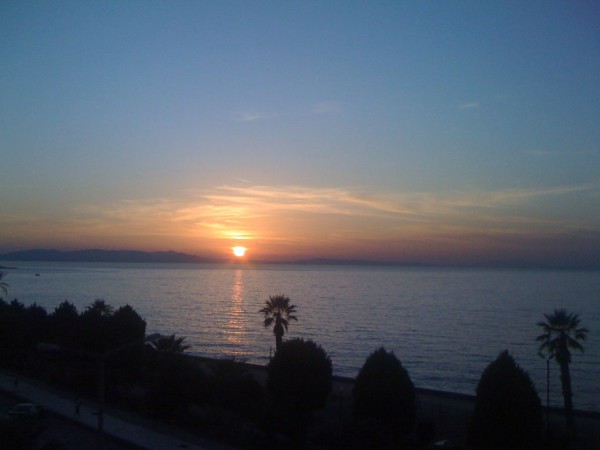
Sunset in Dikili.
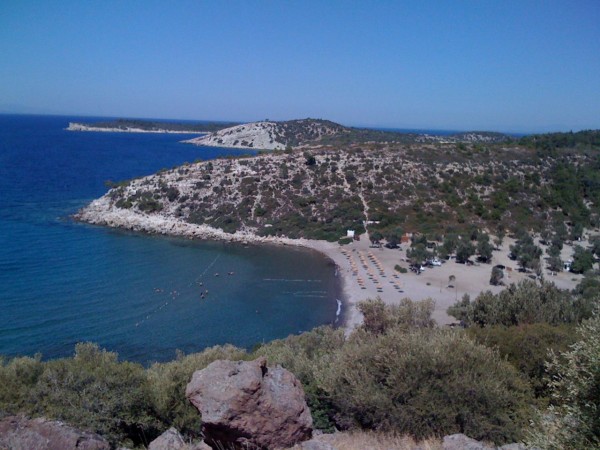
Beach north of Candarli.
I also took a SideTrek, again on Athena’s instruction, to the ancient Greek city of Pergamon, now known as Bergama (http://goo.gl/WtdUA), and meditated at Athena’s sanctuary.
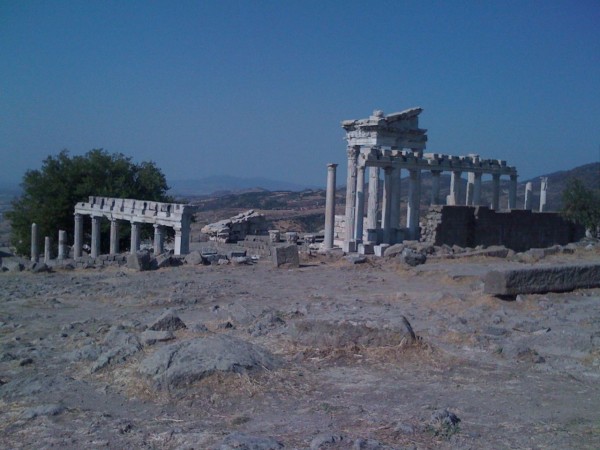
The Trajeneum at Pergamon.
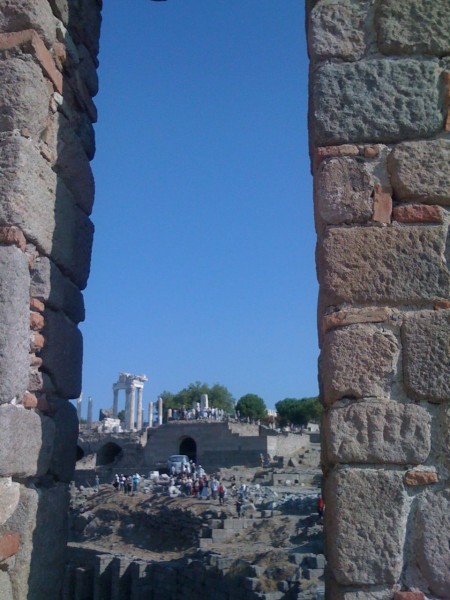
The view from Athena's sanctuary.
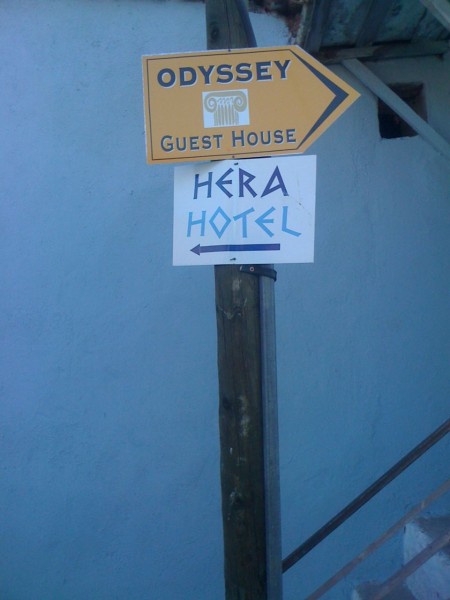
Choices, choices in Bergama.
Then, tired after MedTrekking to seats of gods and the sanctuaries and temples of my favorite goddess, I enjoyed a relaxing muscle-stretching, bone-cracking session at the local hamam and checked into the Odyssey Guest House.
When I made it to Izmir, a delightfully large and bustling metropolis that oozes Mediterranean sentiment and emotion, I immediately headed through the suburb of Bornova to an idyllic, isolated and peaceful park in the hills that was created in 2008 in homage to Homer’s purported birth there.
The aptly named Homeros is located at the top of a valley (http://goo.gl/DsgkL) and features three natural caves, oak-and-pine tree forests, hiking trails, manmade ponds and reservoirs, picnic areas, a Vitamin Bar café and the occasional whiff of livestock.
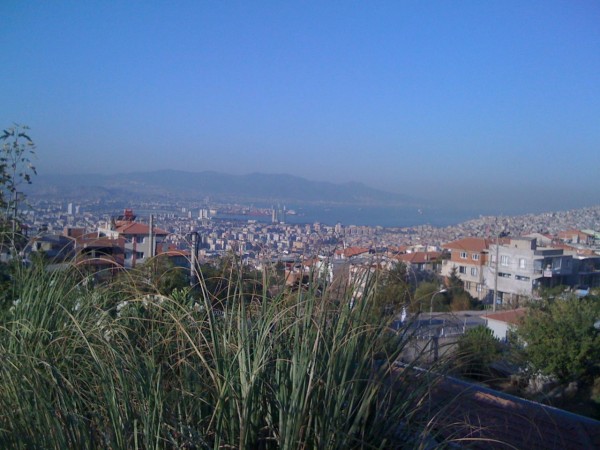
Climbing above Izmir towards Homeros.
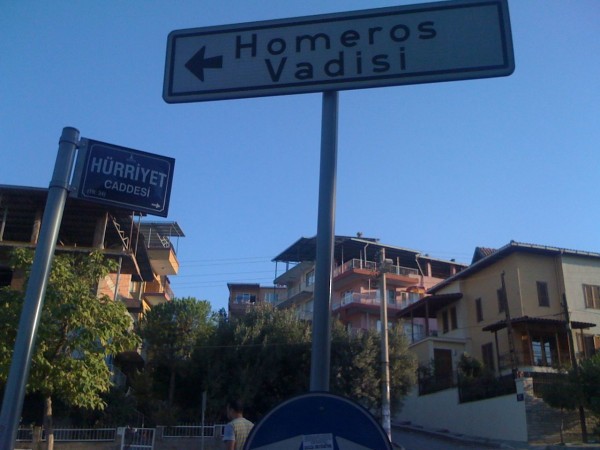
“In A Hurry Yet” road sign points the way to Homeros.
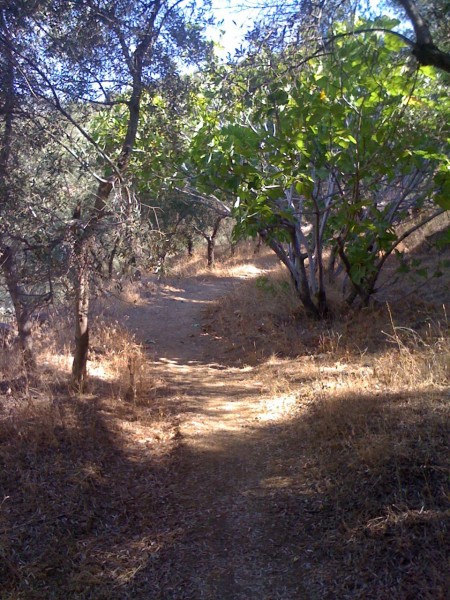
A pleasant trail heads to Homeros.
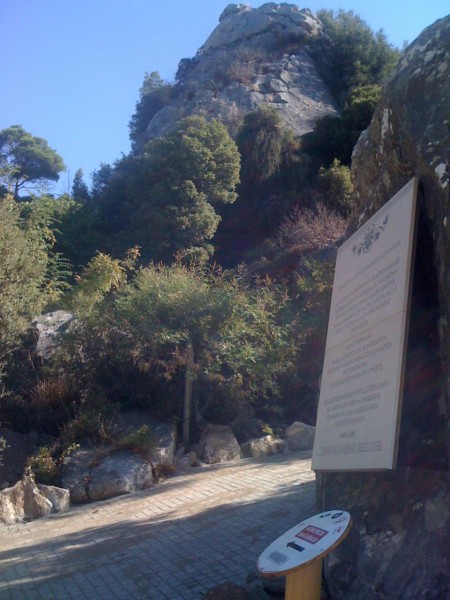
Homer was born in a cave in that rock say the Turks.
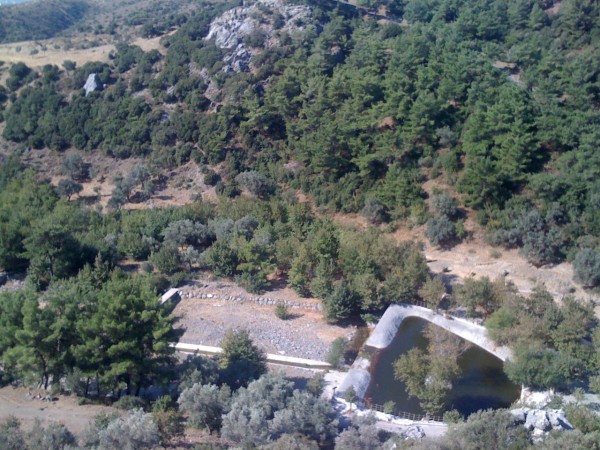
The view from Homer's cave.
Two years ago I spent a week looking for, and finding, Homer’s actual birthplace on the nearby island of Chios (http://goo.gl/r9PvE) where the Greeks contend the author of “The Iliad” and “The Odyssey” was born. But the Greeks have come up with nothing as creative as Homeros in memory of the world’s first decent travel writer. The Turks get the prize for the best PR.
Now, with 8,802 kilometers on my pedometer, I’ll follow the final instructions Athena gave me just before we parted at the summit of Mt. Ida.
Alluding to Odysseus’s two-decade journey back to his home in Ithaca after the Trojan War, the cunning and crafty goddess told me to clean up and return to Redding, CA, where I lived as a kid and currently have a base camp.
“Don’t come back to the Mediterranean until you’ve written ‘The Idiot and the Odyssey II: Myth, Madness and Magic on the Mediterranean,’” said the spear-carrying wily and wise goddess. “And be sure to include a personal and cathartic chapter concerning your own homecoming.”
California here I come.

Cleaning up for California.

Cleaned up for California.
Text by Joel Stratte-McClure.
Photos by Joel Stratte-McClure, Metin Ekdi (1) and Nesibe Ekdi (1).

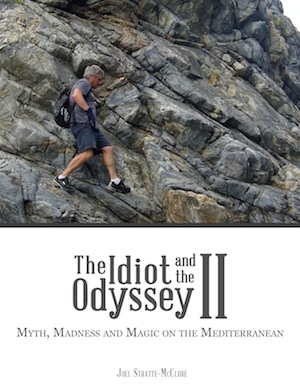


 Follow
Follow
14 Responses to Finding Homeros